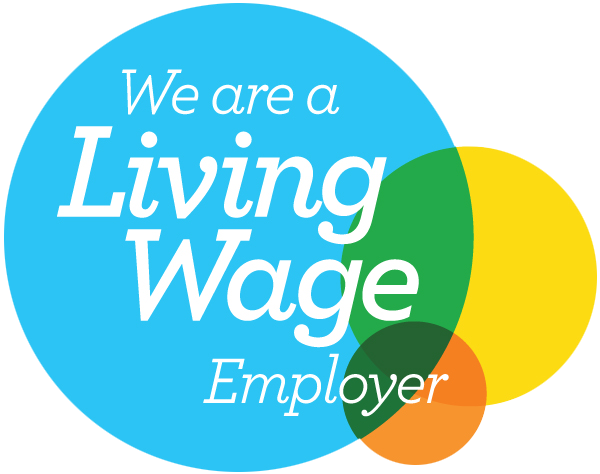
As reports have emerged that one in 10 workers are reportedly anxious over the return to the office and against the backdrop of a buoyant labour market, we explore five steps employers can take to ensure they retain top skills and talent as they define the ‘new normal’.
Workforce resilience has been of critical importance over the last 18 months. The concept is important thanks to the pandemic constantly changing circumstances and employees having to continue work through uncertain conditions and stressful situations. Aon identified that workforce resilience was the key attribute that businesses needed even before the onset of the pandemic, but only one in three employees actually felt resilient.
The CIPD says that wellbeing support is crucial for employees to be able to be resilient, which goes beyond expecting employees to step up, but instead, actively providing them with the tools to tackle stressful working environments. Healthcare provider Lime has found that three in 10 employees do not think they are coping at work and two in five feel less resilient now than they did before the pandemic. Being able to deal with organisational change, toxic relationships or general workplace stress must be supported directly by the employer, with the onus taken away from employees to simply ‘toughen up’.
Strong mental health support across the business is vital. Whilst resilience can be built through stretching people with the right level of support, once they feel like they cannot manage, this risks burnout. Confidence must be built over the long-term. Employers should provide consistent opportunities and learning and development opportunities, with Public Health England suggesting that leaders should be provided with specific mental health training to equip them with the tools to drive support across the business.
For those who have been furloughed and those who have been working from home since March 2020, the readjustment to returning to the office is significant. Everyone has been affected by varying degrees of stress during the pandemic, so employers need to ensure that individuals feel heard when raising any concerns. Providing timely advice to staff returning to the workplace is also hugely valuable. Help regarding childcare and transport arrangements; alleviating concerns around health and safety in the workplace; and accurately communicating updates will have the biggest impact on making sure employees feel as comfortable as they can with new arrangements.
New working arrangements need to be capitalised on by HR as we exit the pandemic. The emergence of hybrid working has to be contextualized beyond HR. The adoption of hybrid working is a cultural change project as it can be implemented in so many different forms. The team responsible for defining what hybrid working means should include premises, IT, marketing and strategy to make it as effective as possible.
Companies need to be clear about why and when they are asking people to come into the workplace. Being intentional about the space as a collaborative hub, particularly for professional services, will maintain the momentum and cultural shift that working from home offers employees. Employee surveys are an effective way of assessing how people are feeling. Some employers have anecdotally shared concerns that their people have gone into survival mode, particularly in the healthcare and residential care sectors and bottled it up over the last year and a half. They have carried on but there are concerns that employees are exhausted. For those working from home, zoom fatigue and the distinction between home and the office has become blurred and fatigue may be setting in. The best way to maintain morale and garner support for post-pandemic arrangements, is to ensure they are consulted and the plan is informed.
It is also a huge opportunity to be more inclusive as an employer – from disabled workers who need to worry less about physically attending the workplace to tapping into under-utilised demographics such as parents who require greater levels of flexibility, virtual working can provide people with greater autonomy. The Centre for Economics and Business Research (CEBR) has said that flexible working could open the jobs market to almost four million people. The new working practices that have emerged from the pandemic are estimated to add £48 billion to the UK economy each year.
The CEBR estimates that 3.8 billion parents, disabled people and carers otherwise ‘locked out’ of certain roles could access work by offering continued flexibility. This is a key factor in making the case for continued flexible working and a reason why those who have criticised the desire to remain flexible and work from home have received huge backlash online. The founder of a recruitment company who accused home workers of wanting to watch Loose Women and the boss of Goldman Sachs calling these arrangements an ‘aberration’ have been heavily criticised as out-of-touch. This fails to treat employees as individuals with a number of factors that affect their ability to get into their workplace.
There is also a growing pressure in certain sectors to be more inclusive of individuals generally, which may start with accommodating their personal commitments and responsibilities. The Financial Conduct Authority is currently consulting on the implementation of targets to proactively address the make-up on financial service companies, including a voluntary target of 40 per cent women on the board, at least one senior board member being a woman and one board member being from a non-white ethnic minority background. Flexibility may help companies address any imbalances in their demographics in this particular sector, building a truly inclusive society.
Frances O’Grady, TUC
Employers are being urged to learn key lessons from the pandemic and consider the business case for flexible working, adapting this to their culture and vision.
“It was once considered a ‘nice to have’, but by making requests a day-one right, we’re making flexible working part of the DNA of businesses across the country. A more engaged and productive workforce, a higher calibre of applicants and better retention rates – the business case for flexible working is compelling.” Business Secretary Kwasi Kwarteng commenting on government proposals to enable employees to request flexible working from their first day of the job. The consultation on the proposals “Making flexible working the default” will run until 1 December 2021.
However, Unions are criticising the proposals for not going far enough. By focusing on the right to request, with Frances O’Grady from the TUC saying “Ministers should change the law so that workers have the legal right to work flexibly from the first day in the job. The right to ask nicely is no right at all.”
There will inevitably be a period of adjustment as employees return in greater numbers to the office. Companies need to ask themselves, what are they doing to accommodate flexible working requests? One in four employees have also been on furlough at some point during the Coronavirus Job Retention Scheme’s operation. Used by 1.3 million employers and 11.6 million jobs, this support has now ended. Employers will need to manage any reticence of staff to return to the workplace and any divisions in the workplace between those who have been coming into the workplace and those at home.
It is important for organisations to assess the long-term impact of the plans they are putting in place and the impact on employee morale as they define the ‘new normal’. Organisations should be monitoring their turnover rates and tackle the key drivers of any evidence of the ‘Great Resignation’. A data-driven retention strategy is important in the current market.
Great Attrition or Great Attraction, McKinsey
The pandemic has prompted many to re-evaluate their priorities and their employer. Without the physical perks of the office, some are questioning whether the culture withstands scrutiny whilst others are exploring whether they can pursue a passion full-time. Given the fluidity of work over the last 18 months, with some returning from furlough and the huge administrative burden placed on HR to make workplaces Covid-secure, forty per cent of employees in a survey by McKinsey reported that they are likely to quit in the next three to six months.
Source: Great Attrition or Great Attraction, McKinsey
36 per cent who quit in the past six months did so without having a new job lined up – a fundamental difference from the effect of previous economic downturns and the aftershock. McKinsey has said that this also indicates ‘that employers may be out of touch with just how hard the past 18 months have been for their workers.’ Organisations need to monitor employees’ experiences virtually and in the workplace to assess whether new working policies are making a positive impact and whether they support long-term employee morale.
The survey also supports our message that pay is a hygiene factor. Competitive pay is key but raising remuneration rates alone will not solve retention problems. The whole reward package, such as offering benefits truly valued by employees, and flexible working to achieve work-life balance need to reflect a sense of shared values that goes beyond pay. The World Economic Forum suggests that companies who build brands that are compelling to employees and align themselves with connection, progress and employee development are most likely to retain staff.
With more employers offering remote working options for talent, employee morale has never been more crucial as we emerge from the pandemic. We can help you plan for a transition to a hybrid-working environment or implement a consistent approach for workforces who are split between being required in the office and at home. Call us today to discuss your retention strategy and create a strong culture that attracts the right people.

Managing Director
Tim is a passionate HR specialist with over 20 years’ experience in pay and reward. As a director of Paydata, Tim has worked with thousands of satis...
5 October 2021
With vacancies at an all time high and recruitment and retention challenges common, successfully man...
28 September 2021
The concept of hybrid working has come to the fore as a new term, signalling the use of technology a...
21 September 2021
Job vacancies have hit an all-time high as the economy recovers. The number of vacancies posted betw...
Sign up for briefings on pay benchmarking, salary surveys, reward strategy and statistical updates.
sign up for updates
© Paydata Ltd 2025 All rights reserved.
Registered in England no: 3632206
VAT no: 728 0808 28
Paydata Ltd, 24 Commerce Road, Lynch Wood, Peterborough, Cambridgeshire, PE2 6LR

